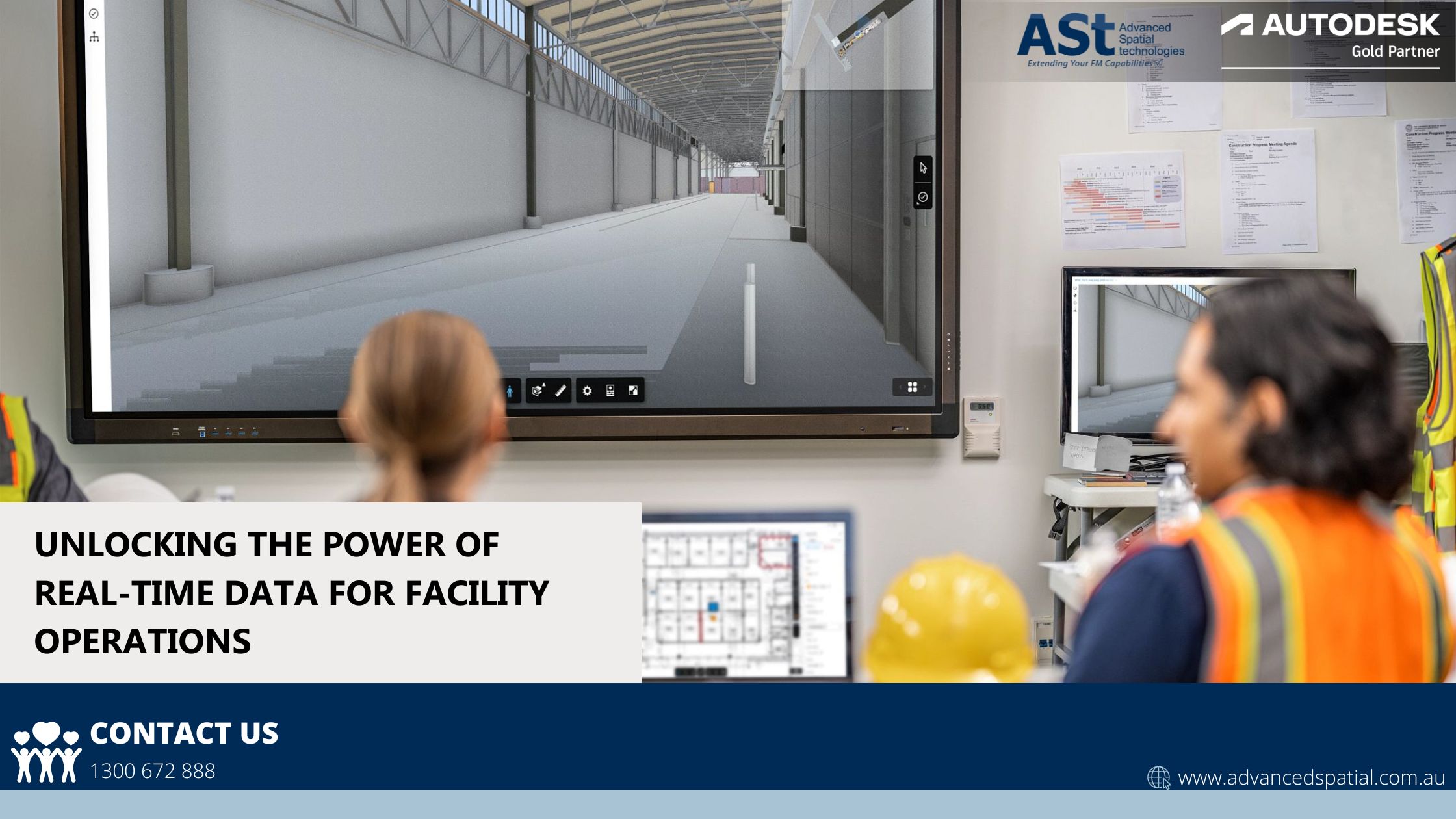
The current state of facilities management: static data prevails
Real-time data can help facility managers improve operational efficiency by 20% through smarter energy usage and asset management. Yet only a minority of firms use real-time insights within daily facility operations. This was a headline finding of a recent poll Autodesk ran with over 100 professionals working across facilities, workplace and maintenance management.
Most facility managers continue to use traditional methods like spreadsheets, paper, email and desktop computerized maintenance management systems (CMMS) to organize their daily operations (see Figure 1). As a result, they are missing out on informative and timely insights across assets, energy, materials, and occupants to drive optimisation opportunities. So, what is behind the adoption gap of real-time data?

The crucial challenge: poor data access
Poor data access is the primary factor holding back the usage of real-time data. Even though buildings produce growing volumes of data, it tends to be siloed across various control systems, security systems and other monitoring systems in non-standardized formats. For busy facility managers, this fragmented data is too time-consuming to access, visualize and get value from.
The consequences can be significant: by relying on static data, facility teams inadvertently overlook equipment faults or rely on calendar schedules to drive maintenance activities, such as equipment inspections, repairs, and replacements. This can contribute to the ineffective use of maintenance budgets and a greater risk of asset failure. And let’s face it – relying on static information in spreadsheets in the age of the Internet of Things (IoT) feels outdated and ripe for change.
To help facility managers improve data access and modernize operations, the Autodesk Tandem team recently launched Streams functionality. This feature helps firms receive and store time-series data from sensors in a digital twin, supported by visualization through heat mapping or charts. Facility managers can use Tandem Streams to pinpoint opportunities for efficiency and analyse historical trends.
Driving value from real-time data requires flexible workflows
Looking forward, change is on the horizon. According to a JLL survey with 1,100 real estate managers, 43% plan to increase investment in data and analytics that enable real-time decision-making. The facilities industry wants to move towards more proactive decision-making across maintenance, space management and energy. The trend towards granular data is taking hold across many sectors: research firm IDC predicts that by 2025, nearly 30% of data generated will be in real-time, driving richer data into all business workflows.

But driving value from real-time data will not be unlocked by technology alone. Building operators must also develop more flexible workflows, empowering facilities staff to respond to near-real-time insights and dynamically schedule work. Pilot projects and staff engagement programs are great ways to help drive a shift in mindset and build trust in software-derived insights.
The bottom line: real-time data is the next enabler of efficiency in facilities management waiting to be embraced. Our advice starts somewhere; start by analysing a single data stream at your facility to learn what value real-time insights can bring to your daily operations.
Ready to subscribe to Autodesk?
Call us: (08) 9367 2888
Email us: sales@advancedspatial.com.au





